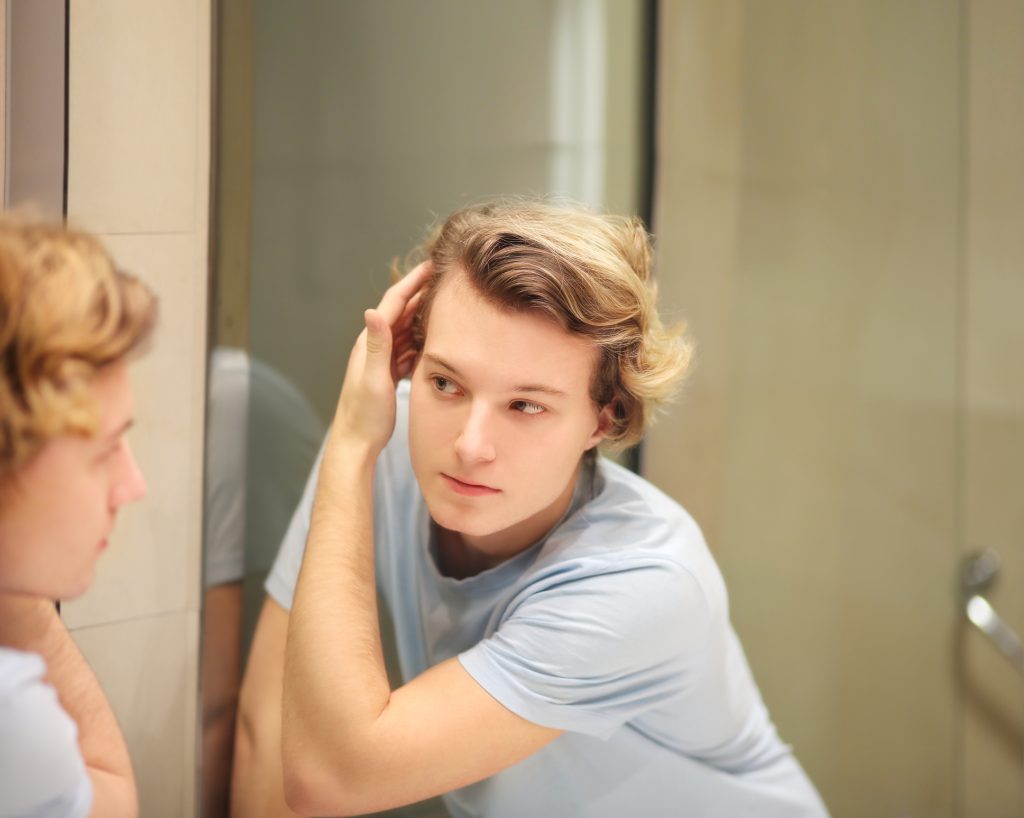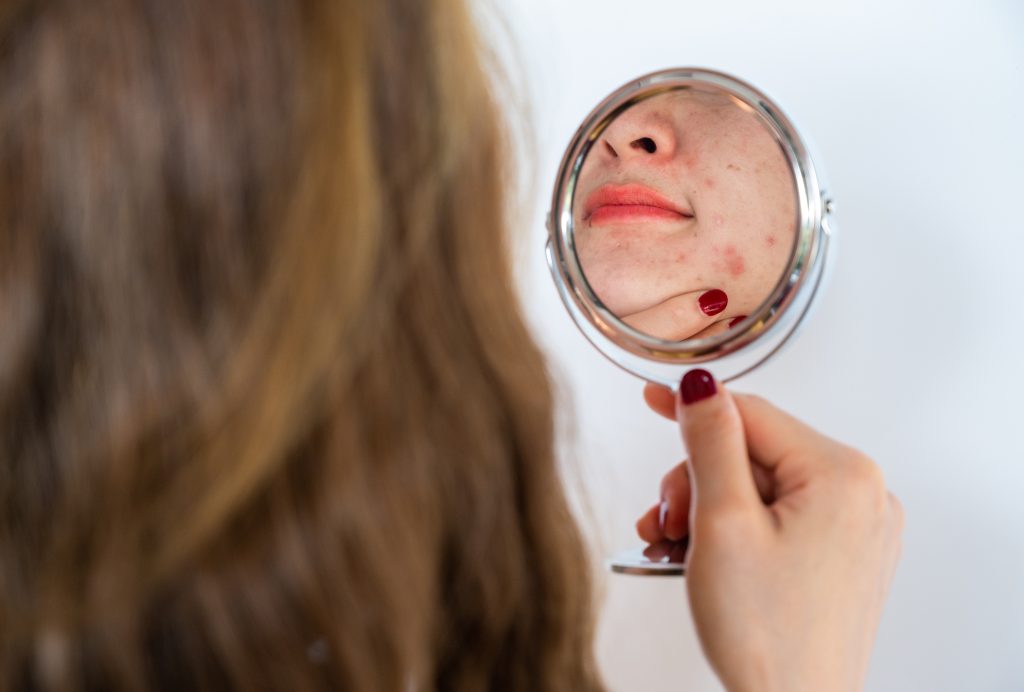
Some negative side effects of opioid use are invisible. A failing heart or weakened immune system, for example, aren’t seen by the naked eye.
Others, however, are hard to miss— like sore, red, or damaged skin.
Your skin is a vital organ. Much of your skin health depends on genetics, but environment and lifestyle behaviors impact it greatly. Your skin can tell a story of hydration, self-care, and good health. Or it can show evidence that your body is suffering. Bad skin can result from a poor diet, not enough water, or a lackluster skincare regimen.
And for those who use or abuse prescription drugs, opioids may be to blame.
How Opioids Affect Your Skin
If you’ve seen a friend of loved one suffering from opioid dependency, you may have noticed skin changes or imperfections. That’s because using drugs not only hurts your body internally, but also alters how the skin looks and operates. Here’s how:

- Inflammation and Itchiness- It’s not uncommon for some to develop redness, dryness, rashes, and extreme irritation after ingesting prescription medications. In fact, experts have been trying to understand the immune response that causes itching and inflammation in those who take opioids (1). One study found more than 60 percent of individuals experienced itching after taking opioids like fentanyl or morphine (2). The itch may cause you to scratch or pick, leaving unsightly and painful marks and scars as a result.
- Acne- Drug use exacerbates acne. If you already struggled with acne, opioids may make it worse. It’s common for someone who has never had acne before to begin experiencing it once dependent on drugs. Experts believe this is due to opioid use increasing the amount a person touches their face often while on drugs (3).
- Skin Infections – Opioids weaken your immune system. This makes it difficult for your body to fight infections. If you develop a scab or wound on your body or face, it will take longer to heal and possibly become infected while on opioids (3). While some sores may heal over time, others might require antibiotics or other medical intervention.
- Changes in Skin Color – With prolonged opioid use, your face may appear pale or “washed out” in color. You may also develop dark circles under your eyes. It’s important to note that a an overly pale, blue skin color coupled with shallow breathing and clammy skin are all signs of overdose—seek help immediately if you notice these signs in a friend or loved one (4).
- “Skin Crawling” – Otherwise known as formication, “skin crawling” is phenomenon notorious during opioid withdrawal. If your body is dependent on opioids to function and suddenly goes without, your nervous system overacts and causes the “skin crawling” sensation. Those who have experienced formication report feeling like bugs are crawling beneath the skin (5). The uncomfortable sensation may cause extreme distress, itching, picking, and intentional breaking of skin to relieve the symptom.
- Allergic Reactions- With any drugs, allergic reactions are possible. It’s no different with opioids. Allergic reactions can be mild with symptoms ranging from itchiness and hives, to severe with an inability to breathe or loss of consciousness. Call 911 or seek help immediately if you notice these signs of an allergic reaction.
To learn more about signs and symptoms of opioid addiction or for more helpful resources, visit https://gamechangerusa.org/category/helpful-article
Visit our resources to learn more.
REFERENCES
- How to some opioids cause severe itching? University of North Carolina Health Care. 2017. Accessed May 8, 2022.
- Opioids and itching: What’s the connection? Jarai, Maté. Medical News Today. 2022. Accessed May 8, 2022.
- The Effects of Drug Abuse on Your Skin and Complexion. Lesser, Ben. DualDiagnosis.org. 2021. Accessed May 8, 2022.
- Classic signs of opiate addiction. Red Rock Recovery Center. 2019. Accessed May 8, 2022.
- Treating ‘Skin Crawling’ (Formication) During Opioid Withdrawal. Hill, Elena. Bicycle Health. 2022. Accessed May 8, 2022.